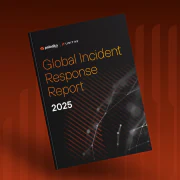2025 Unit 42 Incident Response Report Reveals Nearly 44% of Security Incidents Involved a Web.......
Palo Alto Networks, the global
cybersecurity leader, released the 2025 Unit 42
Global Incident Response Report, which found that threat actors are
now evolving their tactics, moving beyond traditional ransomware and data theft
to focus on business disruption, AI-assisted attacks, and insider threats.
According to the report, almost half of the security incidents (44%) involved a
web browser.
The Indian government recently revealed
that cyber fraud cases jumped over four-fold in FY2024, causing US$ 20 million (177
crores) in losses. These cases have varied from deepfake scams, and voice
cloning scams, to phishing scams and more, causing loss of important data along
with fiscal troubles.
Recognising the dire need for stronger
cybersecurity defence, the Indian government allocated over 1,900 crores for
cybersecurity initiatives and projects in the Union Budget
2025, a whopping increase of 18% as compared to 1,600 crores
allocated in the last budget.
As financial institutions, healthcare providers, and government agencies
across the globe face an unprecedented and ever-evolving cyber threat
landscape, regional regulators are strengthening Zero Trust frameworks,
adopting AI-powered security solutions, and enforcing stricter compliance
measures.
The shift from financial
extortion to full-scale business disruption means enterprises must rethink
their cyber defences before an attack happens, particularly in sectors that
rely on cloud and third-party vendors.
The 2025
Unit 42 Global Incident Response Report, which analysed hundreds of major cyber
incidents, aims to highlight how the increased sophistication of malicious
actors is amplifying the challenges faced by businesses worldwide.
Key
findings of the 2025 Unit 42 Incident Response Report include:
- Operational
Disruption as a Primary Goal: Attackers are
prioritising sabotage over data theft, aiming to cripple businesses and
maximize extortion. In 2024, 86% of incidents led to
operational downtime or reputational damage.
- Surge
in Insider Threats Linked to North Korea: Cases tripled
in 2024, with operatives targeting contract-based
technical roles at major tech firms, financial services,
media, and government defense contractors. Advanced techniques,
including hardware-based KVM-over-IP devices and
Visual Studio Code tunneling, make detection more challenging.
- Accelerated
Data Exfiltration: Attackers are exfiltrating
data three times faster than in 2021,
with 25% of cases seeing data stolen within
five hours, and nearly 20% occurring in under an
hour.
- Expanded
Attack Surfaces: 70% of incidents involved
three or more attack vectors, underscoring the need for
comprehensive security across endpoints, networks, cloud environments, and
human vulnerabilities. Web browsers remain a weak link, facilitating 44% of attacks via phishing,
malicious redirects, and malware downloads.
- Phishing
Resurges as Top Entry Point: 23% of attacks began with phishing, overtaking
vulnerabilities as the leading attack vector. GenAI has made phishing
campaigns more scalable, sophisticated, and difficult to detect.
"Cyber
criminals targeting organisations in the Asia-Pacific and Japan region are no
longer just stealing data, they are actively taking down entire operations,”
said Philippa Cogswell, Vice President and
Managing Partner, Unit 42, Asia-Pacific & Japan, Palo Alto Networks. "Traditional approaches to
cybersecurity are no longer sufficient in addressing the visibility gaps and
complexity challenges that organisations face today. To stay ahead of evolving
threats, businesses must adopt AI-driven, automated security solutions that can
outpace adversaries and provide comprehensive real-time protection."
“We have
observed a notable rise in cyberattacks as threat actors increasingly adopt
automation, RaaS models, and GenAI to streamline their campaigns. These tools
allow attackers to rapidly identify vulnerabilities, create realistic phishing
tricks and launch large-scale attacks faster, that aren’t just causing data
theft but making business disruption their primary goal,” said Huzefa
Motiwala, Senior Director, Technical Solutions, India and SAARC, Palo Alto
Networks. “Organisations
must adopt AI-powered security solutions to keep up with modern threats,
recognising the urgent need to fight AI with AI.”
Data for
this report was sourced from more than 500 cases Unit 42 responded to between
October 2023 and December 2024, as well as from other case data going back to
2021. The affected organisations were headquartered in 38 unique countries,
including the U.S. and those based in Europe, the Middle East, and
Asia-Pacific.


































Leave A Comment